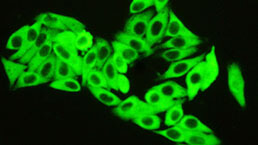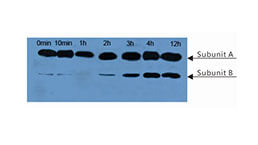Recombinant Antibody to Dehydroepiandrosterone (DHEA) 

- UOM
- FOB US$ 171.00 US$ 399.00 US$ 570.00 US$ 1,425.00 US$ 5,700.00
- Quantity
Overview
Properties
- Product No.RAA398Ge21
- Organism SpeciesPan-species (General) Same name, Different species.
- ApplicationsWB; IFC; IHC; IP.
If the antibody is used in flow cytometry, please check FCM antibodies.
Research use only - Downloadn/a
- CategoryEndocrinologyReproductive scienceHormone metabolismRheumatology
- SourceRecombinant monoclonal antibody preparation, Host Mouse
- Ig Isotype IgG, Clone Number n/a
- PurificationAntigen-specific affinity chromatography followed by Protein A affinity chromatography
- LabelNone
- Immunogen n/a
- Buffer Formulation0.01M PBS, pH7.4, containing 0.05% Proclin-300, 50% glycerol.
- TraitsLiquid, Concentration 0.1-1mg/ml
Sign into your account
Share a new citation as an author
Upload your experimental result
Review

Contact us
Please fill in the blank.
Specifity
The antibody is a mouse monoclonal antibody raised against DHEA. It has been selected for its ability to recognize DHEA in immunohistochemical staining and western blotting.
Usage
Western blotting: 1:40-1:400
Immunohistochemistry: 1:40-1:200
Immunocytochemistry: 1:40-1:200
Flow cytometry: 0.2-2 µL/106 cells
Optimal working dilutions must be determined by end user.
Storage
Store at 4°C for frequent use. Stored at -20°C in a manual defrost freezer for two year without detectable loss of activity. Avoid repeated freeze-thaw cycles.
Stability
The thermal stability is described by the loss rate. The loss rate was determined by accelerated thermal degradation test, that is, incubate the protein at 37°C for 48h, and no obvious degradation and precipitation were observed. The loss rate is less than 5% within the expiration date under appropriate storage condition.
Giveaways
Increment services
Citations
- Possible Metabolic Alterations among Autistic Male Children: Clinical and Biochemical ApproachesPubmed: 30600432
- A preliminary study on the mechanism of the neurosteroid-mediated ionotropic receptor dysfunction in neurodevelopmental toxicity induced by?¡33862428
- MiR-1224-5p attenuates polycystic ovary syndrome through inhibiting NOD-like receptor protein 3 inflammasome activation via targeting Forkhead box O 134637688








